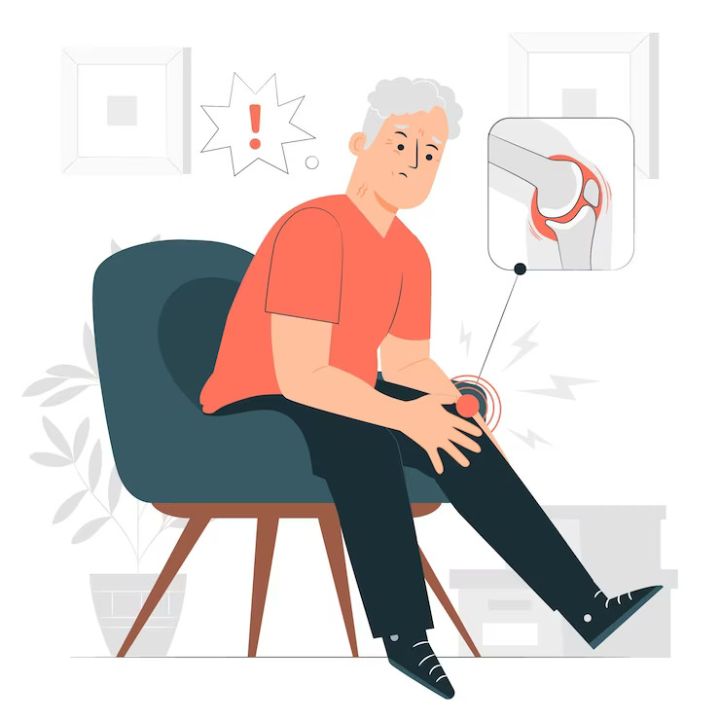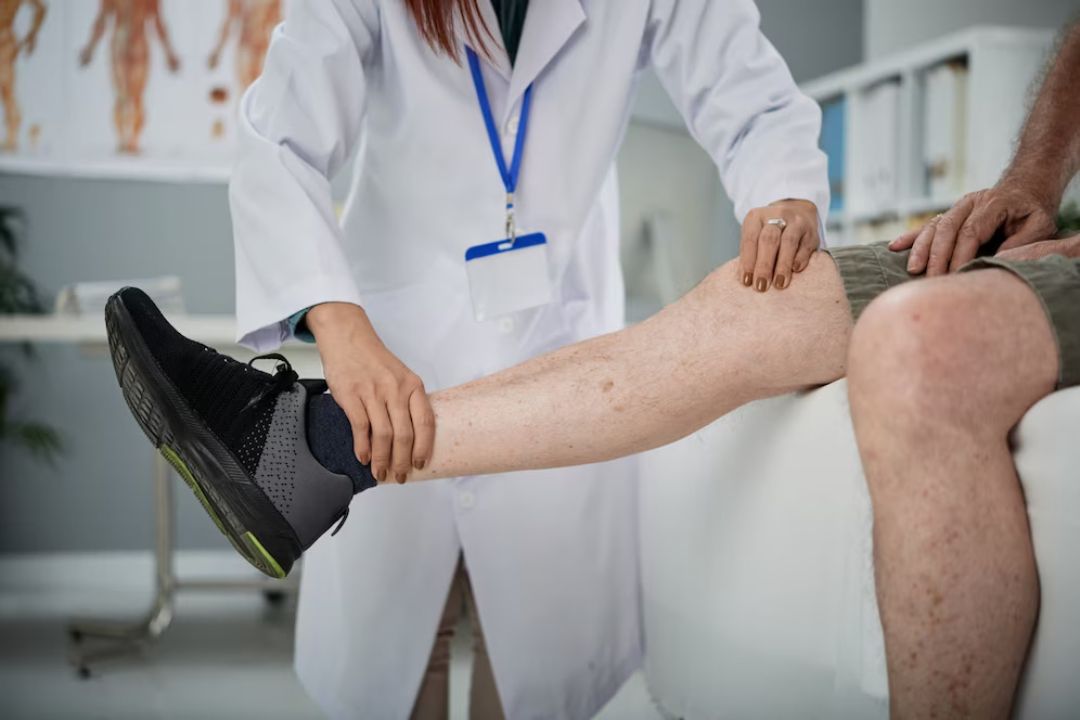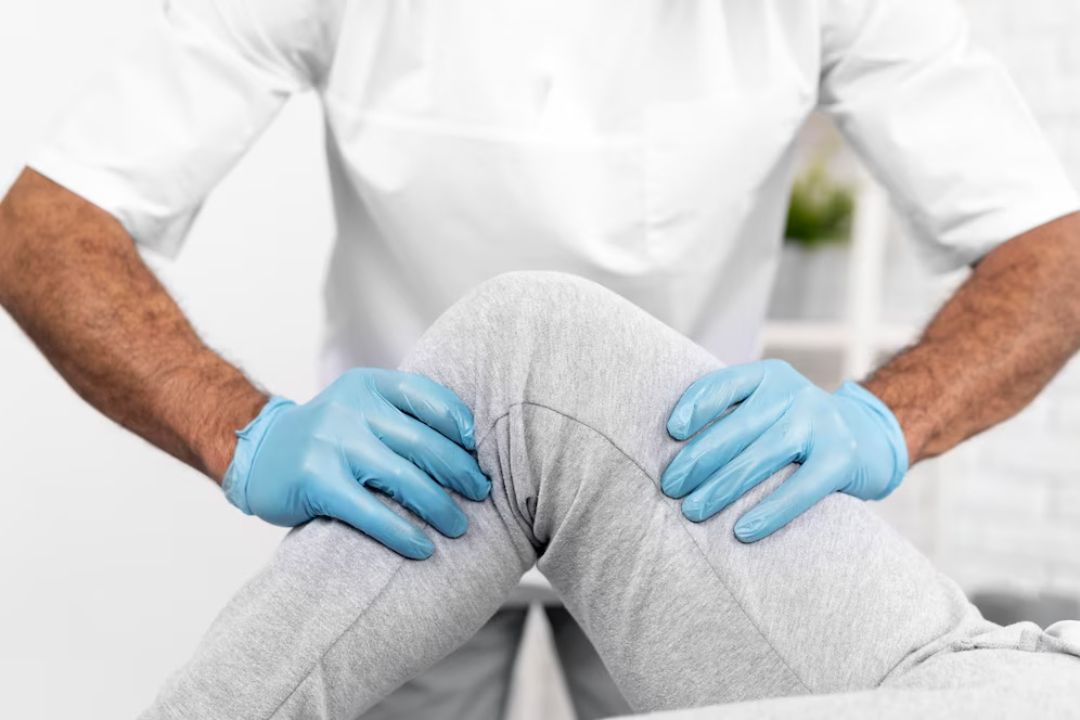If you’re experiencing unusual anterior knee pain, it might be due to Fat Pad Syndrome, also known as Hoffa’s condition. This lesser-known ailment can cause significant discomfort and impact your mobility. As someone potentially affected by this syndrome, understanding its symptoms, causes, and treatment options is crucial for managing the pain effectively.
Fat Pad Syndrome, also known as Hoffa’s Condition, is a painful issue where your knee’s protective cushioning, imagine it like a shock absorber for your car, becomes inflamed or damaged.
Named after Albert Hoffa who first identified this syndrome in 1904, its prevalence varies widely due to the complex nature of the condition.
Your psychological well-being can be impacted as constant pain may lead to stress and anxiety. Some people may have a genetic predisposition making them more susceptible to developing Hoffa’s Condition.
Certain occupations involving heavy lifting or prolonged kneeling could also increase your risk.
It’s important to recognize these factors early on to effectively manage and treat the Syndrome.
Should you experience consistent discomfort in your heel, especially during walking or running, it’s possible you may be dealing with this under-recognized condition. Fat Pad Syndrome can be complex to diagnose due to its similarity with other foot ailments.
Fat pad inflammation causes localized pain at the front of the knee, accompanied by tenderness below the knee cap when pressed. In contrast, patellofemoral joint pain manifests as a more diffuse, generalized knee pain without specific tender spots.
To identify this condition, pay attention to these key indicators:
Remember that Condition Misdiagnosis is common, so consult a specialist for an accurate evaluation and treatment plan.
Knee pain can be a real party pooper, throwing a wrench into your daily activities and making even the simplest tasks feel like Herculean feats. It’s often caused by a variety of factors, all of which are as pesky as the next.

Photo Credit: Stories, Freepik
Arthritis impact is one common culprit behind knee pain. The inflammation and swelling can really put you in a bind, causing severe discomfort during movement.
Sports injuries or ligament tears are other potential causes, especially if you’re an athlete or regularly engage in high-impact activities.
Obesity effects also play their part; carrying extra weight puts additional strain on your knees.
Lastly, don’t discount aging-related issues – over time, wear and tear on this crucial joint can lead to chronic knee pain.
When you’re experiencing persistent knee discomfort, your doctor may suggest several medical procedures to diagnose the underlying issue correctly. A thorough assessment of your medical history is crucial in identifying any previous injuries or conditions that might contribute to your pain.
Additionally, the importance of a physical examination cannot be understated; it allows your healthcare provider to assess the extent and nature of your discomfort firsthand.
Diagnostic imaging methods like an MRI or X-ray can reveal abnormalities within the joint structure that are not visible externally. Lab tests play a relevant role too, as they can detect infection or inflammation markers.
In some cases, biopsy procedures may be carried out for further analysis if a tissue abnormality is suspected. These combined diagnostic approaches ensure accurate identification and treatment of fat pad syndrome.

Photo Credit: Stefamerpik, Freepik
You might be wondering if there are ways to alleviate your knee discomfort without going under the knife, and indeed, non-surgical therapies offer a promising avenue. Here’s a list of four treatments that could potentially help:
Remember to consult a professional for personalized advice on these physiotherapy approaches before you start any treatment regimen.
While non-surgical therapies can be effective for managing fat pad syndrome, there are cases where surgical interventions may be necessary. If you’ve exhausted conservative treatments without relief, invasive techniques might be the next step.
Prior to any procedure, a thorough risk assessment is conducted to evaluate your overall health and potential for surgical complications. It’s vital to know that surgery isn’t a quick fix and recovery timelines can vary greatly.

Photo Credit: pressfoto, Freepik
Post-operative care plays a crucial role in ensuring successful outcomes and minimizing complications. This often includes physical therapy exercises and follow-up appointments with your surgeon. Remember, each person’s recovery journey is unique; patience and commitment will go a long way in helping you regain comfort and mobility after surgery for fat pad syndrome.
Navigating the road to recovery after surgery isn’t always a straight path, it’s often filled with ups and downs. However, several approaches can promote effective rehabilitation from fat pad syndrome:
Your journey may also include an exercise regimen tailored to your needs, emotional support from loved ones, or even assistance from mobility aids as you gradually regain independence. Remember, every step forward counts in this journey towards restoring your foot health.
Shifting towards healthier lifestyle habits can act as a safeguard against foot-related discomfort and foster overall well-being. Dietary modifications, like reducing fat intake and increasing consumption of fruits, vegetables, and lean proteins, can contribute to weight management, which reduces stress on your feet.
Regular exercise routines not only aid in maintaining a healthy weight but also strengthen the muscles supporting your foot pad.

Photo Credit: Freepik
Stress management techniques like meditation or yoga may improve mental health and indirectly promote foot health.
Exploring alternative therapies like acupuncture could relieve fat pad syndrome symptoms.
Lastly, regulating your sleep helps in body recovery and healing processes.
With these prevention strategies, you’re better equipped to prevent or manage fat pad syndrome effectively.
Fat pad syndrome often involves strategies to reduce inflammation and protect the heel. This includes rest, ice, anti-inflammatory medications, and wearing shoes with good cushioning or heel pads. Physical therapy exercises to improve foot mechanics may also be helpful.
Fat pad syndrome, or heel fat pad syndrome, typically presents as deep, dull aching pain in the center of the heel. The pain may be worse with walking or standing and can feel like you’re “walking on a pebble.”
The duration of fat pad syndrome varies depending on the condition’s severity and the treatment’s effectiveness. With appropriate management, symptoms can improve within a few weeks to several months.
Plantar fasciitis and fat pad syndrome cause heel pain but are different. Plantar fasciitis involves inflammation of the plantar fascia, a band of tissue on the bottom of the foot, often causing pain after periods of rest or in the morning. Fat pad syndrome involves damage to the fat pad that cushions the heel, typically causing deep, dull pain in the center of the heel.
Fat Pad Syndrome, also known as Infrapatellar Fat Pad Syndrome, is a condition where there is inflammation and pain in the infrapatellar fat pad, a soft tissue pad that sits below the patella (kneecap) at the front of the knee.
The symptoms of Fat Pad Syndrome include pain at the front of the knee, especially when bending or straightening the leg. The pain can be sharp or dull and may worsen with activities such as running or jumping.
Fat Pad Syndrome can be caused by a variety of factors, including trauma to the knee, overuse or repetitive stress on the knee joint, obesity, and inflammatory conditions such as knee osteoarthritis.
Fat Pad Syndrome is commonly diagnosed through a physical examination and a review of the patient’s medical history. Imaging tests such as magnetic resonance imaging (MRI) may be used to confirm the diagnosis and rule out other possible causes of knee pain.
Treatment for Fat Pad Syndrome may include conservative measures such as rest, ice, compression, and elevation (RICE), non-steroidal anti-inflammatory drugs (NSAIDs) for pain relief, physical therapy exercises to strengthen the quadriceps muscles and improve knee biomechanics, and the use of orthotics or taping techniques to support the patella and relieve pressure on the fat pad. In some cases, corticosteroid injections may be recommended to reduce inflammation and pain.
In rare cases where conservative measures have been unsuccessful, surgery may be considered as a last resort. Surgical options for Fat Pad Syndrome may include the removal of the inflamed fat pad or other procedures to address any underlying structural issues contributing to the condition.